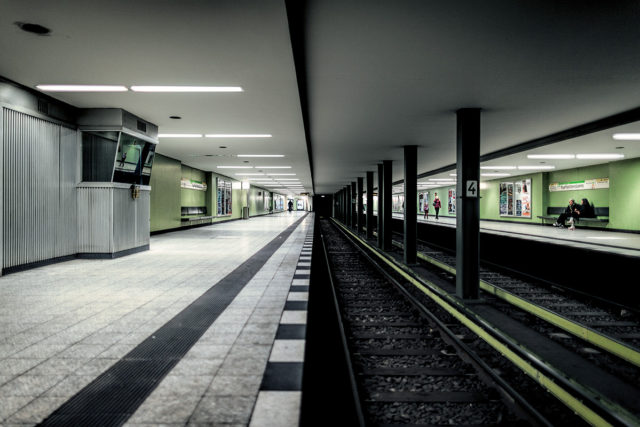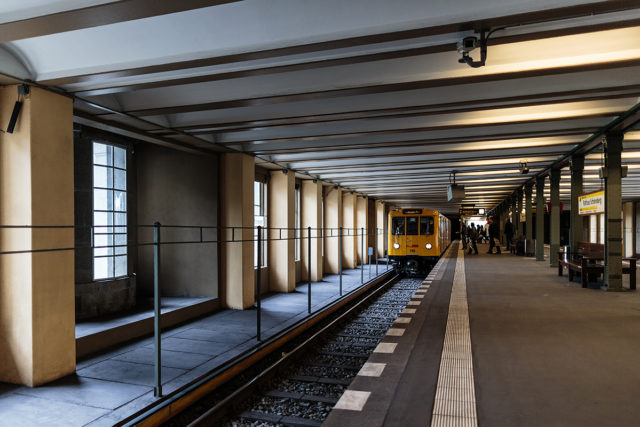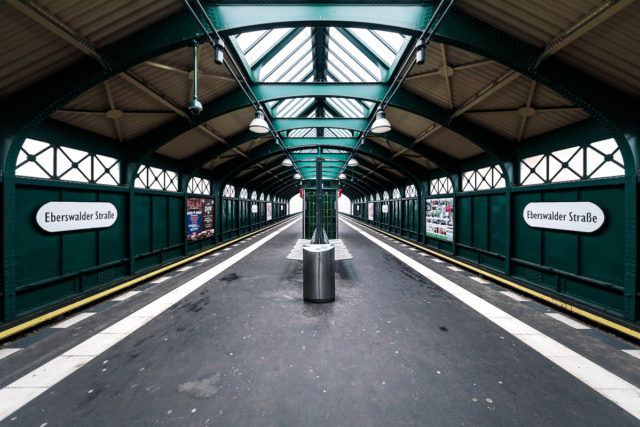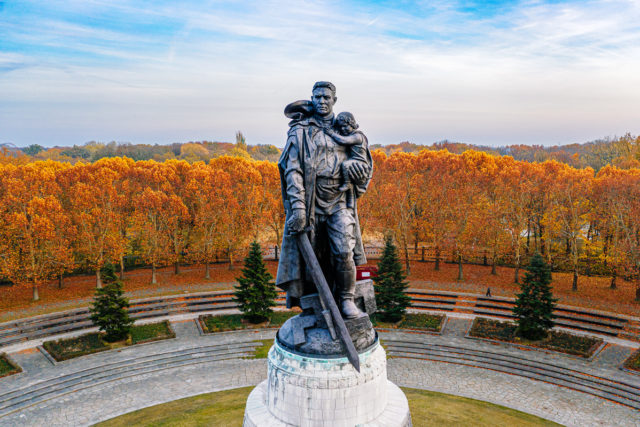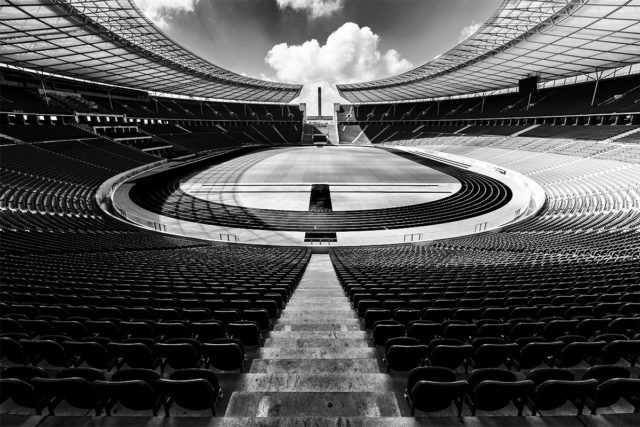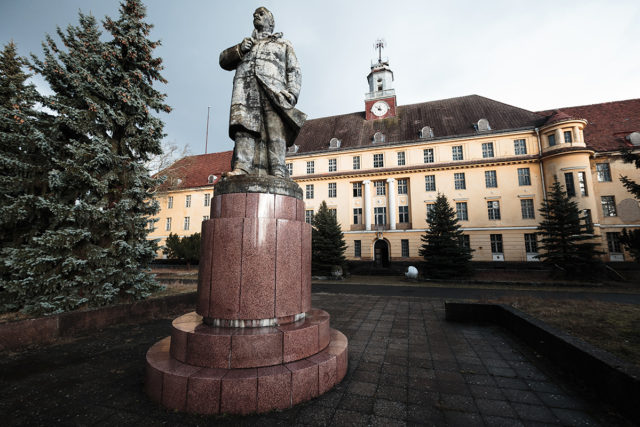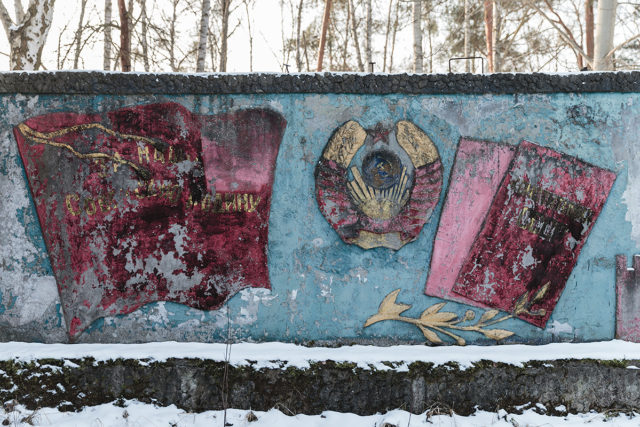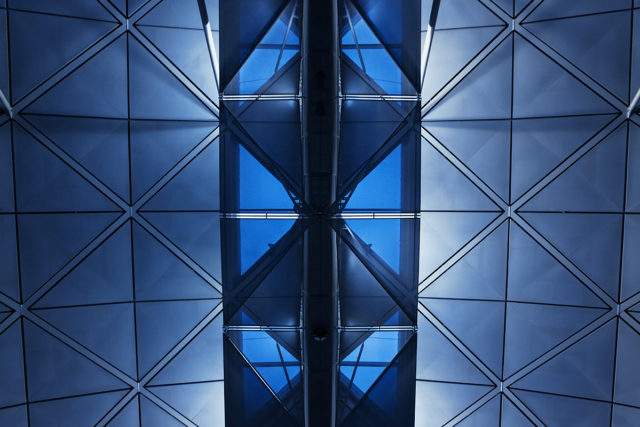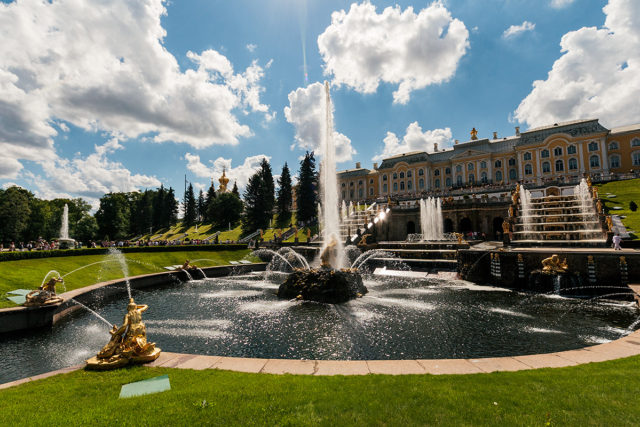Architecture photos with focus on underground train networks, modern as well as historic constructions and Berlin
Berlin’s U1 line runs east-west, from Warschauer Straße to Uhlandstraße, from Friedrichshain district to Charlottenburg. More than the half of its course U1 rides everything but U (that is underground) and the majority of its route leads through Kreuzberg district. That neighbourhood gets shaped by U1’s elevated railway trail to such an extent, that the interaction between train and district even inspired a musical to become written.…
Read More
When in the year 2019 the U55 merges in the U5, then U4 officially will be Berlin’s shortest underground again. Its course starts at Nollendorfplatz square, ends at Innsbrucker Platz square and measures solely 2.9 kilometres leading through Berlin’s Schöneberg district. It was the once autonomous town of Schöneberg that launched U4 as Germany’s first communal subway and even today, in a reunified Berlin, it is hard to imagine things without this metro line as it connects the western city centre with the S-Bahn ring…
Read More
Berlin’s underground line U2 heads straight through the entire city, from Pankow to Ruhleben, making stops at the current eastern as well as city centres, that is Alexanderplatz and Zoologischer Garten, but also passing by the actual historic but also new city centres, that is Klosterstraße and Potsdamer Platz. Today this orange-red metro line is one of Berlin’s most trafficked one.…
Read More
As a small boy I was pretty much impressed by the Soviet War Memorial being located in Berlin’s Treptower Park and even today that place has quite some impact. However, nowadays such a visit is generally voluntary than back in the days, as the whole school had got to show up there.…
Read More
Many of Berlin’s places of interest, no matter if built for “perpetuity” or perpetually not being accomplished, are often hard-wired to a single name. Ulbricht has his TV Tower, Wowereit his BBI airport desaster and Honecker dreamed of a 100 years lasting wall. In the 1930’s such dreams year-lasting-wise even had one more zero in the end and threw Germany as well as the rest of the world into turmoil.…
Read More
Village of 6.000 souls versus military town with up to 75.000 soldiers – Back in the days the Soviets knew very well how to make use of Wünsdorf (Вюнсдорф), a settlement being located in Berlin’s south along the railroad leading to Dresden. Even if the whole territory is abandoned for several years now and completely fenced, it is possible to have a closer look at the heart of the complex, the today’s House of Officers, a building telling manifold stories of times when it was Army Sports School for the Nazi as well as even before for the emperor…
Read More
After World War II a huge area being located less than a 1 hour car drive away from the highway ring surrounding Berlin became one of Soviet Army’s most important military sites. This abandoned garrison is located near the city of Zehdenick, in the north of the village Vogelsang. At peak time up to 15.000 people lived and worked in the present-day ghost town; soldiers, their relatives as well as civil associates.…
Read More
The Chand Baori step well at Abhaneri is everything but a staircase wit. Its unconventional architecture guarantees to the Rajputs, who are usually living in a dry region a water supply being usable throughout the whole year. Due to being surrounded by dozens of stairs, people can access the well from literally every side and when having a closer look at its structures and design, you will easily find yourself not only stuck in a maze of thousands steps but also able to see Shiva’s beauty…
Read More
Throwing the head back and having a look at things above can often open up quite interesting new perspectives. Two of suchlike perspectives recently came across me: in Berlin, and when travelling Hong Kong…
Read More
Gracefully does the world’s most northern metropolis frame its geographic aorta, Neva River…
Read More
